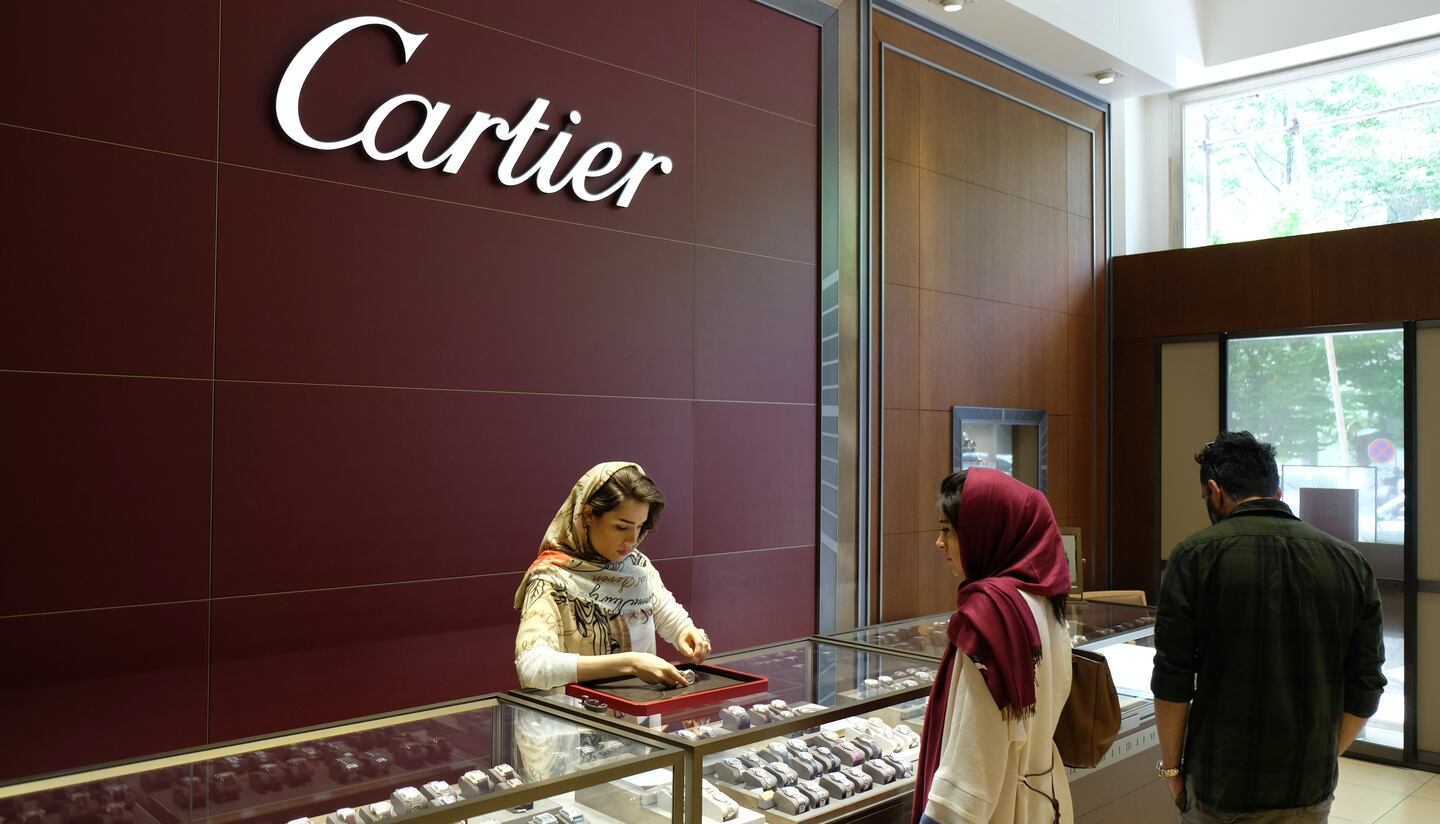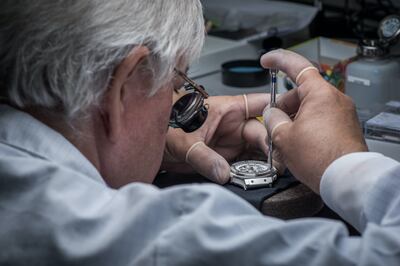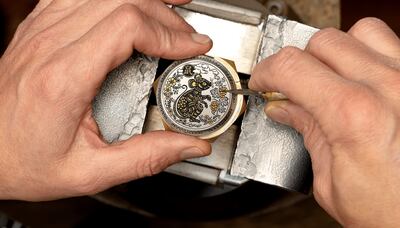
The Business of Fashion
Agenda-setting intelligence, analysis and advice for the global fashion community.

Agenda-setting intelligence, analysis and advice for the global fashion community.

PARIS, France — Hard luxury purveyor Cartier's latest addition to its watch stable isn't a shiny, new, diamond-encrusted model meant to woo top-spending customers. Instead, it's a suped-up service for watches they already own.
Cartier Care offers clients the expected support — strap changes, maintenance work, personalisation — as well as the unexpected, including warranty extensions, watch buy-back offers, discounts on future purchases and even the opportunity to borrow timepieces for a limited time.
The programme is “an example of how we provide our clients with surprising, compelling and relevant experiences,” said Arnaud Carrez, marketing, communication and clients services director at Cartier International.
Yet, coming from the company that invented the business of modern men’s wristwatches as we know it — wristwatches used to only be worn by women until 1904, when Cartier created the first design for men, who previously favoured pocket watches — the programme signals a shift of focus in the industry, from selling new timepieces to adding value to future and existing ones as sales of new watches continue to be challenged across the globe.
ADVERTISEMENT
Cartier isn't the only brand thinking this way. Watchmaker Panerai, which is, like Cartier, owned by Swiss luxury conglomerate Richemont, recently launched Pam.Guard, which offers warranty extensions up to eight years, a personalised newsletter and reminder for maintenance work. LVMH-owned Hublot has the Hublotista platform, which enables clients to book specialised visits to the Hublot factory in addition to expected routine services, and independent Swiss watchmaker Audemars Piguet opened the AP House in London, wrapping its service in a plush private club.
The hope is that all the extra effort will result in a longer relationship with customers, and make them appreciate the value of a watch amid uncertain times. While Switzerland exported 1.66 million high-end watches (those priced over roughly $3,000) in 2019, up from 488,000 in 2000, according to the Federation of the Swiss Watch Industry, the overall market for Swiss watches is shrinking. Switzerland exported 23.74 million timepieces in 2018, down 20 percent from 29.66 million in 2000.
Switzerland exported 23.74 million timepieces in 2018, down 20 percent from 29.66 million in 2000.
While the luxury watch market was valued at €39 billion in 2019, according to Bain & Company — almost double the size of branded fine jewellery, which hit €21 billion — the industry has been navigating troubled waters since 2015, when the Chinese government started its clampdown on gifted — and corruption-fuelling — watches. Richemont’s sales of watches declined by 15 percent in that fiscal year, but soon began to recover. Now, new problems are developing. Student protests in Hong Kong, which began last summer, shook one of the industry’s pillar markets. Swiss watch exports to Hong Kong posted a sharp decline of 26.7 percent in November 2019 vs 2018, following a 29.7 percent year-over-year drop in October. Now, the coronavirus is affecting the Lunar New Year’s gifting season.

Bezel fitting | Source: Hublot
Globally, the consumer’s fundamental relationship with watches is changing. Not only is a timepiece wholly unnecessary in our connected age, but in many cases it has been entirely replaced by a computer. Apple’s sales of “wearables, home and accessories,” including AirPods, the HomePod and the Apple Watch, were $24.5 billion in 2019, and research firm Strategy Analytics calculated that the Apple Watch owned 51 percent share of the record 18 million smartwatches shipped in the last quarter of 2018.
Plus, there’s the third-party seller problem. Unlike jewellery, which is typically exclusively sold through the brand’s own boutiques, luxury watches are also sold in watch-dedicated stores such as Watches of Switzerland or Bucherer that have developed services of their own.
Brands have little control over these retailers and in 2018, Richemont's profits were hit by the €200 million spent on buying back watches to protect them from discounted sales on the grey market. It's no coincidence that, in the same year, Richemont acquired Watchfinder, a watch resale company that the Swiss conglomerate has cleverly woven into the business of its brands. The second-hand luxury market grew at a rate of 7-10 percent in 2018, according to an estimate from Berenberg Bank, compared to a just 3-4 percent increase in the luxury market overall.
So, how are brands adapting to the new normal? “Watch brands are finally realising how important it is to have direct contact with the final clients,” said Federica Levato, a partner at Bain & Company in Milan.
ADVERTISEMENT
Watch brands are finally realising how important it is to have direct contact with the final clients.
Changing straps and servicing watches is not big news. The novelty here is the speed of delivery, which luxury watchmakers guarantee with newly created service centres around the world. (In the past, it could take months to repair a watch because it had to go all the way back to the manufacturer’s headquarters.)
The constant connection may not boost profits on individual pieces, but they allow brands to continue to collect valuable data and to keep timepieces in top condition. (Unlike in soft luxury, where brands are still pushing back against the secondhand market, watchmakers are realistic about resale.)
And for some small, independent houses — which, lacking the means of the big players, have suffered the most from the overall contraction of the business — those routine services do support the top line.
For instance, at Linde Werdelin, services now make up 25 percent of sales, up from 10 percent in 2016, when the luxury sports watch specialist pulled out of the wholesale circuit and stopped attending Baselworld, the never-to-be-missed industry trade fair. Co-founder Jorn Werdelin said he has downsized from producing 1,000 watches per year to 100. However, handling sales of new and pre-owned watches himself has resulted in an appreciation of the brand Linde Werdelin on the vintage market.

Panerai Year of the Rat Sealand Watch | Source: Courtesy
“Every brand needs to have a healthy secondary market,” Werdelin said. “If a model bought five years ago now costs 70 percent of the original price, that’s fine, but if it’s only 40 percent of the original price, that’s a problem.”
Warranty extensions, which are now offered by many of the luxury brands, are meant to help extend the life, and maintain the beauty, of a watch, so that they can keep as much value as possible in the secondary market.
With its “Certified Pre-Owned” programme, Bucherer buys back watches from its clients, which can be traded for the purchase of a new or pre-owned one. “With the ever-changing portfolio of our Certified Pre-Owned watches, there is always a good reason for watch lovers to come back to the boutiques and explore what is new,” said Jörg Baumann, Bucherer’s chief marketing officer.
ADVERTISEMENT
Today, most of Richemont’s brands offer to authenticate and buy back their watches, which are then sold through Watchfinder.
“Clients are interested in the investment value of a luxury watch,” said Jean-Marc Pontroué, chief executive of Panerai, who compares the watch business to that of cars, one of the first industries to take control of its secondary market.
At Panerai’s London boutique, clients can currently sell their old watches to Watchfinder, using the proceeds to purchase new timepieces. Pontroué emphasised that “luxury is as much in product creativity as in service,” noting that the value of some Panerai models has appreciated on the vintage market.
Every brand needs to have a healthy secondary market.
Rental programmers are also increasingly common. Watch rental companies such as Vyrent in the US and Acquired Time in Singapore are spreading fast, although success is not guaranteed: New York-based Eleven James folded in 2018, with watch trade publication Hodinkee reporting that the startup was unable to raise the additional funding it needed to continue.
Some brands are doing it themselves. Swiss manufacturer DuBois et Fils offers its shareholders a selection of its models for rent for as little as $82 a month.
Renting is often the entryway to owning, as prospective buyers can “test-drive” a watch before committing to a purchase — exactly as they would do with a car. While Cartier’s courtesy loan service feels new — and a little bit risky — it’s a time-honoured tradition. Pierre Cartier, grandson of Cartier’s founder Louis-François Cartier, pioneered the concept to help sell important jewels, including the famous Hope diamond, at the beginning of the twentieth century.
One by one, these services may look like small experiments. However, together they are poised to reshape the whole industry. Someday, watch houses may seemingly never actually sell a watch, but merely look after it for the next buyer.
Related Articles:
[ Can Baselworld Catch Up With the Times?Opens in new window ]
The luxury goods maker is seeking pricing harmonisation across the globe, and adjusts prices in different markets to ensure that the company is”fair to all [its] clients everywhere,” CEO Leena Nair said.
Hermes saw Chinese buyers snap up its luxury products as the Kelly bag maker showed its resilience amid a broader slowdown in demand for the sector.
The group’s flagship Prada brand grew more slowly but remained resilient in the face of a sector-wide slowdown, with retail sales up 7 percent.
The guidance was issued as the French group released first-quarter sales that confirmed forecasts for a slowdown. Weak demand in China and poor performance at flagship Gucci are weighing on the group.